
by logisticsplus | Nov 4, 2020 | News
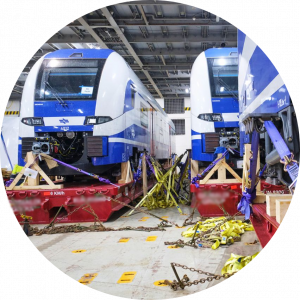 The Logistics Plus Europe Project Cargo team is proud to announce that they have been nominated as the project logistics solution provider for the Siemens Mobility Desiro HC project to Israel. Over the past several months, our project engineering team worked hard to find the most efficient loading solution for Siemens railways. As a result, our team met the highest Health, Safety, Environment, and Quality (HSEQ) standards without interfering with the design of the railways.
The Logistics Plus Europe Project Cargo team is proud to announce that they have been nominated as the project logistics solution provider for the Siemens Mobility Desiro HC project to Israel. Over the past several months, our project engineering team worked hard to find the most efficient loading solution for Siemens railways. As a result, our team met the highest Health, Safety, Environment, and Quality (HSEQ) standards without interfering with the design of the railways.
Project Scope
In 2018, Siemens and the state-owned Israel Railways (ISR) signed a €900 million contract for the delivery of 60 Desiro HC regional trainsets over the next ten years. This contract is of major strategic importance since this was the first time in company history that Siemens was selling complete trains to Israel. Also, the Desiro HC train platform was sold for the first time outside of Germany. By partnering with the RoRo carrier Grimaldi Germany GmbH, Logistics Plus was able to provide constant support and visibility throughout this crucial project.
Pictures from this ongoing project can be seen below.
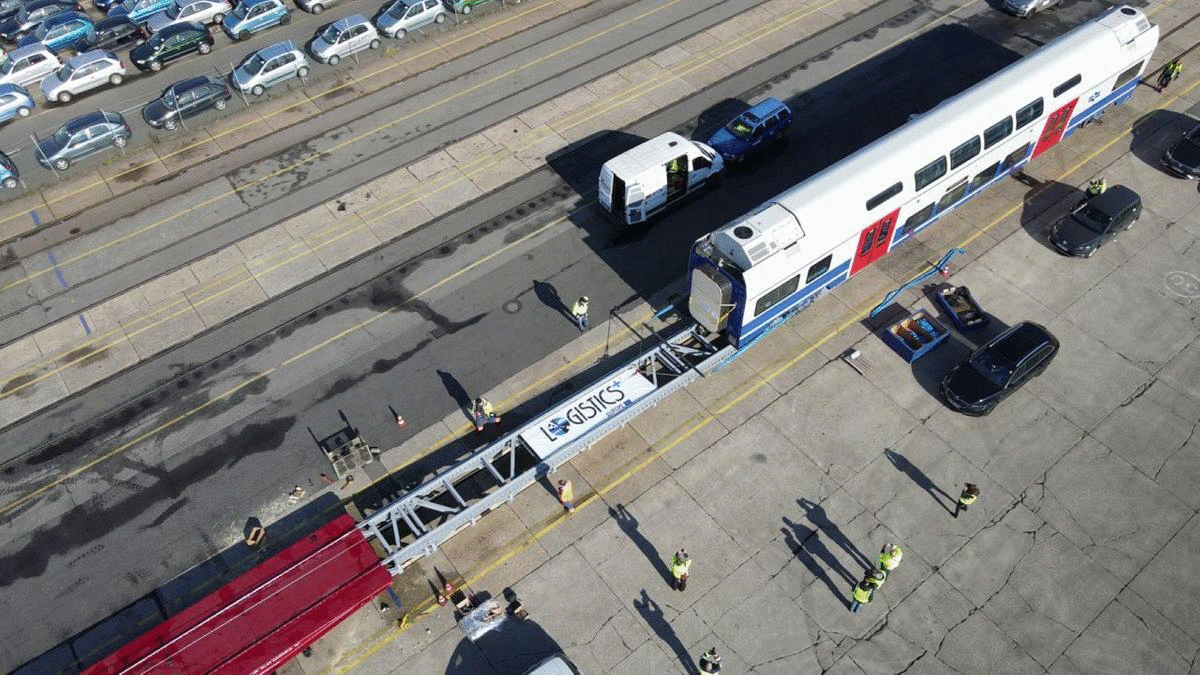



by logisticsplus | Nov 3, 2020 | News
FOR IMMEDIATE RELEASE
Logistics Plus Acquires New 130K Square Foot Warehouse in Erie, PA
The new 1803 Pittsburgh Avenue facility gives the company nearly 300K total square feet of warehousing in Erie.
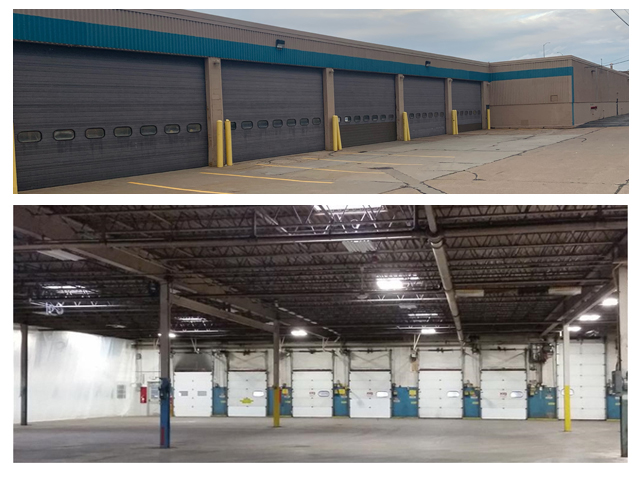 ERIE, PA (November 3, 2020) – Logistics Plus Inc., a leading worldwide provider of transportation, logistics, and supply chain solutions, has purchased a new warehouse located at 1803 Pittsburgh Avenue in Erie, Pennsylvania. The 130,000 square foot facility brings the company’s total commercial warehousing capacity in the area to nearly 300,000 square feet. Earlier this year, the company acquired the Times-News Building which has 88,000 square feet of storage space. Additionally, in partnership with its sister company, NTL, the company manages three additional Erie PA warehouses at 12th Street, 17th Street, and Greengarden Boulevard.
ERIE, PA (November 3, 2020) – Logistics Plus Inc., a leading worldwide provider of transportation, logistics, and supply chain solutions, has purchased a new warehouse located at 1803 Pittsburgh Avenue in Erie, Pennsylvania. The 130,000 square foot facility brings the company’s total commercial warehousing capacity in the area to nearly 300,000 square feet. Earlier this year, the company acquired the Times-News Building which has 88,000 square feet of storage space. Additionally, in partnership with its sister company, NTL, the company manages three additional Erie PA warehouses at 12th Street, 17th Street, and Greengarden Boulevard.
The 1803 Pittsburgh Avenue facility features include:
- Nice, clean warehousing space with ample on-site parking
- 6 interior docks, 1 exterior dock, and 1 on-grade door for loading/unloading
- High ceilings with soon-to-be-installed racking and heavy-lift forklift capacity
- Experienced, on-site warehouse management personnel and WMS
- Conveniently located off I-79 near the I-90 intersection
- Next-day access to nearly 60% of the U.S. population
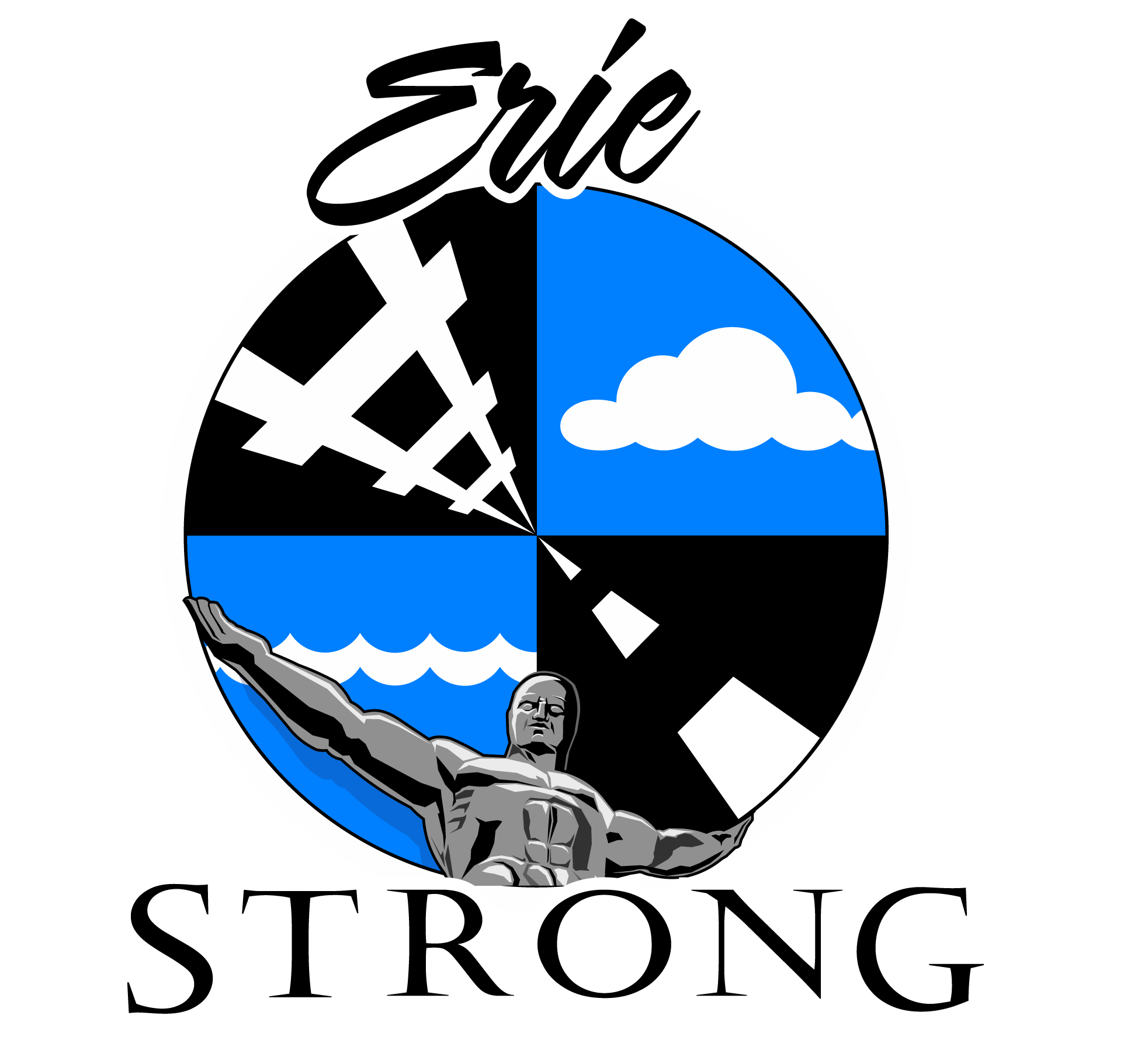 “The new Pittsburgh Avenue facility will enable us to better handle our growing warehouse business in the region,” said Jim Berlin, founder & CEO of Logistics Plus. “We remain committed to the growth and development of Erie as shown by our recent property investments here. Although we are a global company, we try to keep and manage as much business as we can locally to keep Erie strong.”
“The new Pittsburgh Avenue facility will enable us to better handle our growing warehouse business in the region,” said Jim Berlin, founder & CEO of Logistics Plus. “We remain committed to the growth and development of Erie as shown by our recent property investments here. Although we are a global company, we try to keep and manage as much business as we can locally to keep Erie strong.”
Learn more about the Logistics Plus Erie, PA warehouses at www.logisticsplus.com/erie-pa-warehouses.
About Logistics Plus Inc.
Logistics Plus Inc. provides freight transportation, warehousing, fulfillment, global logistics, business intelligence technology, and supply chain management solutions through a worldwide network of talented and caring professionals. The company was founded over 24 years ago in Erie, PA by local entrepreneur, Jim Berlin. Today, Logistics Plus is a highly regarded, fast-growing, and, award-winning transportation and logistics company. With a strong passion for excellence, its 450 global employees put the “plus” in logistics by doing the big things properly, plus the countless little things, that together ensure complete customer satisfaction and success.
The Logistics Plus® network includes offices, warehouses, and agents located in Erie, PA; Akron, OH; Buffalo, NY; Chicago, IL; Chino, CA; Cleveland, OH; Dallas, TX; Des Moines, IA; Detroit, MI; Fort Worth, TX; Haslet TX; Houston, TX; Laredo, TX; Lexington, NC; Los Angeles, CA; Melbourne, FL; Nashville, TN; New York, NY; Olean, NY; San Francisco, CA; Australia; Bahrain; Belgium; Canada; China; Colombia; Czech Republic; Egypt; France; Germany; India; Indonesia; Japan; Kazakhstan; Kenya; Libya; Mexico; Netherlands; Poland; Saudi Arabia; Taiwan; Turkey; UAE; Ukraine; Uganda; and United Kingdom; with additional agents around the world. For more information, visit www.logisticsplus.com or follow @LogisticsPlus on Twitter.
Media Contact:
Scott G. Frederick
Vice President, Marketing
Logistics Plus Inc.
(814) 240-6881
scott.frederick@logisticsplus.com
Click the image below to download the Logistics Plus logo:

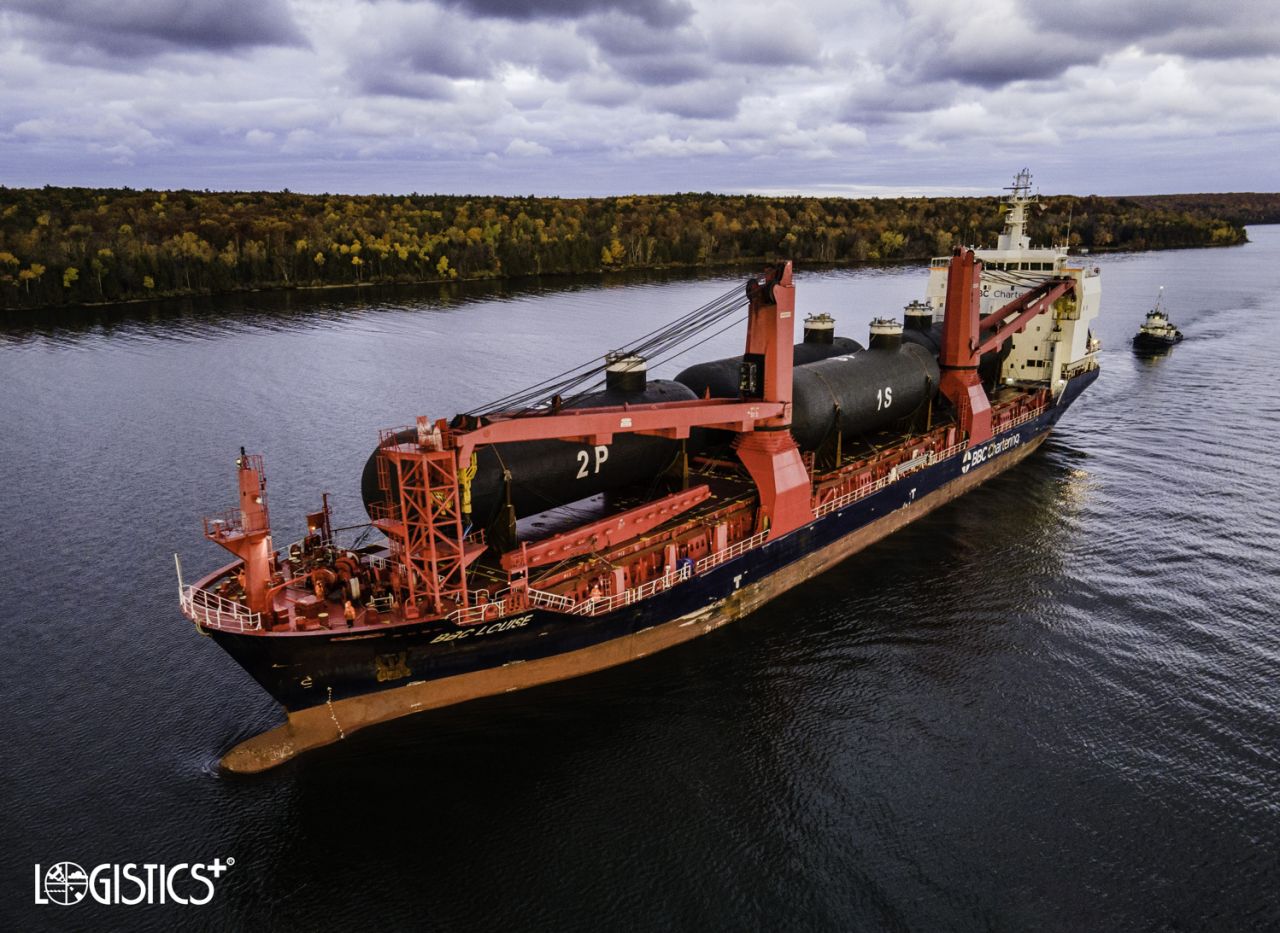
by logisticsplus | Oct 28, 2020 | News
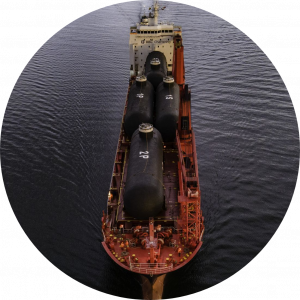 The Logistics Plus Europe Project Cargo team successfully delivered four liquefied natural gas (LNG) cargo tanks from Shanghai, China to Sturgeon Bay, Wisconsin. Combined, the four gas tanks have a total volume of 15,472 freight tons. The tanks are assigned for installation in the largest LNG bunker barge under construction in the United States.
The Logistics Plus Europe Project Cargo team successfully delivered four liquefied natural gas (LNG) cargo tanks from Shanghai, China to Sturgeon Bay, Wisconsin. Combined, the four gas tanks have a total volume of 15,472 freight tons. The tanks are assigned for installation in the largest LNG bunker barge under construction in the United States.
“The Logistics Plus Projects team in Antwerp and Bremen performed outstandingly and displayed major commitment on behalf of our customer to guarantee the success of this complex project,” said Bremen’s Managing Director Thomas Hoelker. “Fixing the necessary combination cargo to be able to book a full charter vessel at a reasonable cost created a win-win situation for all involved parties.”
Frederik Geirnaert, Global Project Manager for Logistics Plus added, “This was a project we have been working on for over two years now. In the end, everything came together with the support of the Chinese supplier, the customer, the shipping line, and the receiving shipyard. Even COVID-19 could not prevent this cargo from arriving just in time with smooth execution.”
Photos from this project can be seen below.
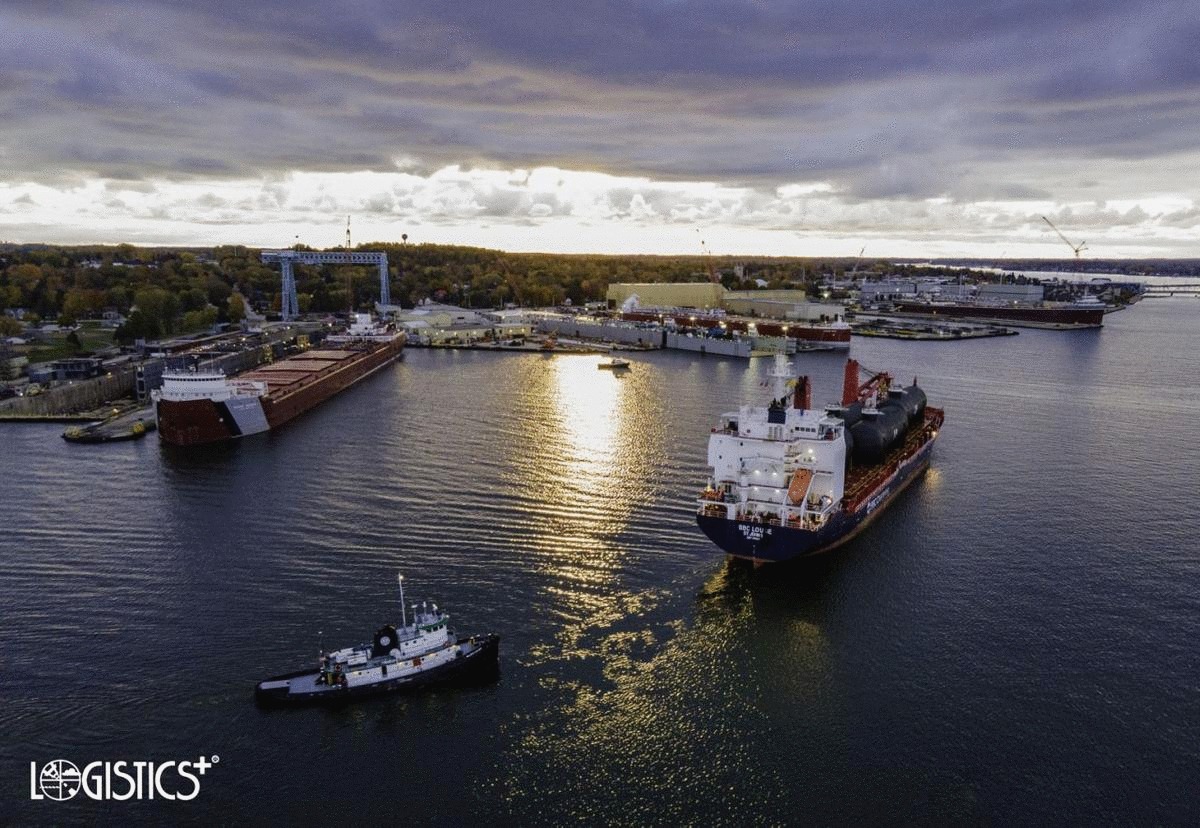


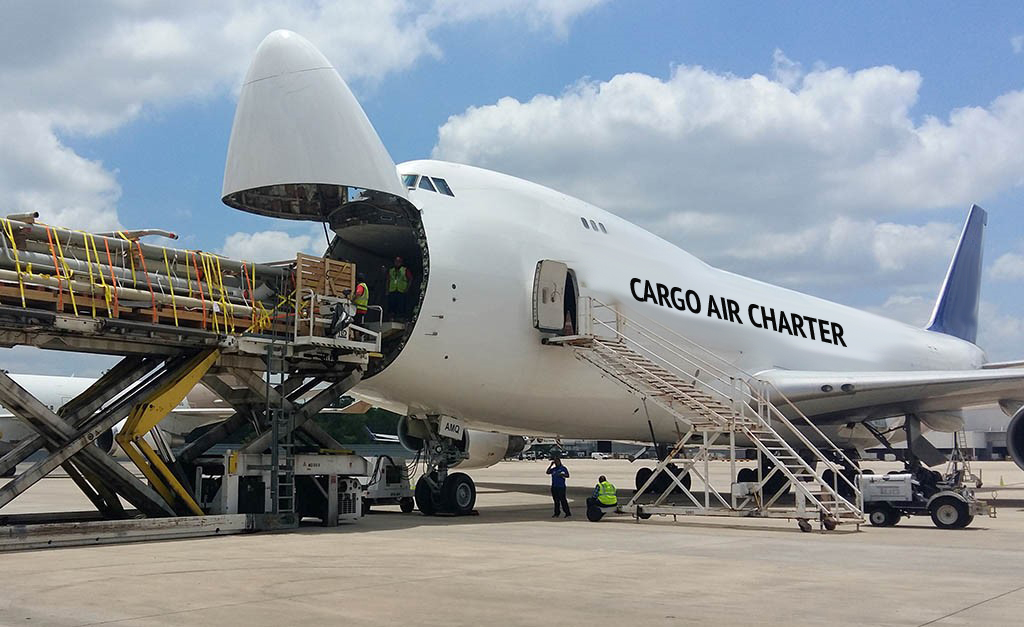
by logisticsplus | Oct 28, 2020 | News
 While air charters are a common alternative to commercial passenger flights, they’re also an alternative method for transporting cargo. Aside from the cost, one of the most apparent differences between a standard air freight shipment and a cargo air charter shipment is that instead of renting space on a plane you’re renting the entire plane! While it may be more cost-effective for cargo to fly commercially, chartering an entire plane becomes the best solution when time is money.
While air charters are a common alternative to commercial passenger flights, they’re also an alternative method for transporting cargo. Aside from the cost, one of the most apparent differences between a standard air freight shipment and a cargo air charter shipment is that instead of renting space on a plane you’re renting the entire plane! While it may be more cost-effective for cargo to fly commercially, chartering an entire plane becomes the best solution when time is money.
When Time is of the Essence
When it comes to critical supply chains, a missing part or component could equate to losing money every minute until the part is replaced and the supply chain is running smoothly again. When it comes to medical supply chains, a missing drug or instrument could even mean life or death. When a large, heavy-lift, or oversized shipment is urgently needed elsewhere in the world, sometimes there simply is not enough room on a commercial cargo plane to accommodate the move. In situations like these, it’s not uncommon for companies to resort to air charter cargo solutions.
Benefits of an Air Charter
One of the most significant benefits of chartering an entire plane comes from the flexibility surrounding the logistical process. Aircraft used for air charters are readily on a runway, surrounded by a team of cargo professionals who make it possible for charters to take flight in less than two hours, in most cases. If you need a critical flight sooner than what’s readily available on commercial airlines, or if you need to minimize the risk of flight cancellations or delays because the shipment is critical to your supply chain, then air charter might be the optimal solution. While chartering a plane may seem extravagant to some, it comes down to opportunity cost: spending more to solve a problem quickly and efficiently versus waiting for a commercial flight that may risk the loss of critical time, money, or business.
In the right circumstances, air charter service can be a fast, flexible option for your important supply chain need. To quickly get what you want, when you want it, there is no service better than air charter for your cargo. When you pay to use the entire plane, you get to make a lot of decisions like location and scheduling—allowing for timely, flexible deliveries.
You can also find tough-to-find air capacity by going with an air charter. This is especially true right now, as the airfreight industry faces disruptions and supply shortages related to the COVID-19 pandemic. If capacity shortage persists, other transportation modes may also become too backlogged to handle the shipments coming in. That’s when an air charter can help get your cargo to its final destinations on time.
Preparing for an Air Charter
When time is of critical importance, as is the case when booking an air charter, it helps to be well-prepared for an impending deadline. The following list contains the necessary information that will be needed when booking a charter, along with a couple of tips. While all the information listed is not required to obtain a quote, it helps generate a more accurate estimate of the cost.
- Shipper contact information
- Shipper company name
- If the shipping company is not the paying company, the consignee name and contact should also be provided
- Billing authorization number (if applicable)
- The shipping company, address, city, state, and zip code (if applicable)
- On-site contact at shipper
- Dock or special instructions
- Consignee, address, city, state, and zip code (if applicable)
- On-site contact at the consignee
- Dock or special instructions
- Ready time, including time zone
- Need time, including time zone
- Pieces
- Weight
- Dimensions
- Hazmat (Yes / No)
- If Yes, obtain UN# and Class
- Services required
- Door to Door
- Door to Airport
- Airport to Door
- Airport to Airport
Air Charter Industry Facts
It is estimated that the value of the air charter services market was $26.57 billion in 2019 and it is projected to reach $33.08 billion by 2024. Increasing demand for cargo air charters and the shift toward aircraft renting are the major factors driving the market. However, the volatility in aviation fuel prices is a concern. According to Wikipedia, there are approximately 15,000 business jets available for charter in the world. The U.S. market is the largest, followed by the European market with growing activity in the Middle East, Asia, and Central America.
How to Book an Air Charter
If this is your first time booking a charter, no worries – Logistics Plus is here to help! The dedicated, LP Air Charter Group – led by seasoned industry veterans – has relationships with all the top airfreight cargo carriers. Our cargo air charter services are perfectly suited for any critical shipment need, including aerospace, automotive, generators, heavy-lift, helicopters, healthcare, medical, oversized, oil & gas, pharmaceuticals, PPE supplies, project cargo, transformers, and more!
The LP Air Charter Group will determine all facets of arranging the air charter, including:
- Which airport to use, in part based upon the length of the runway and determination of which aircraft can or cannot land at each airport
- What type of aircraft is needed
- How the plane will be loaded, including whether a specific airport has high-low drivers to load/unload the aircraft
- What the hours of operation are for the fixed-base operator (FBO)
Ready to learn more? Contact the LP Air Charter Group today!


Don’t need an air charter but still interested in international air freight services? You can contact us about standard air freight too.
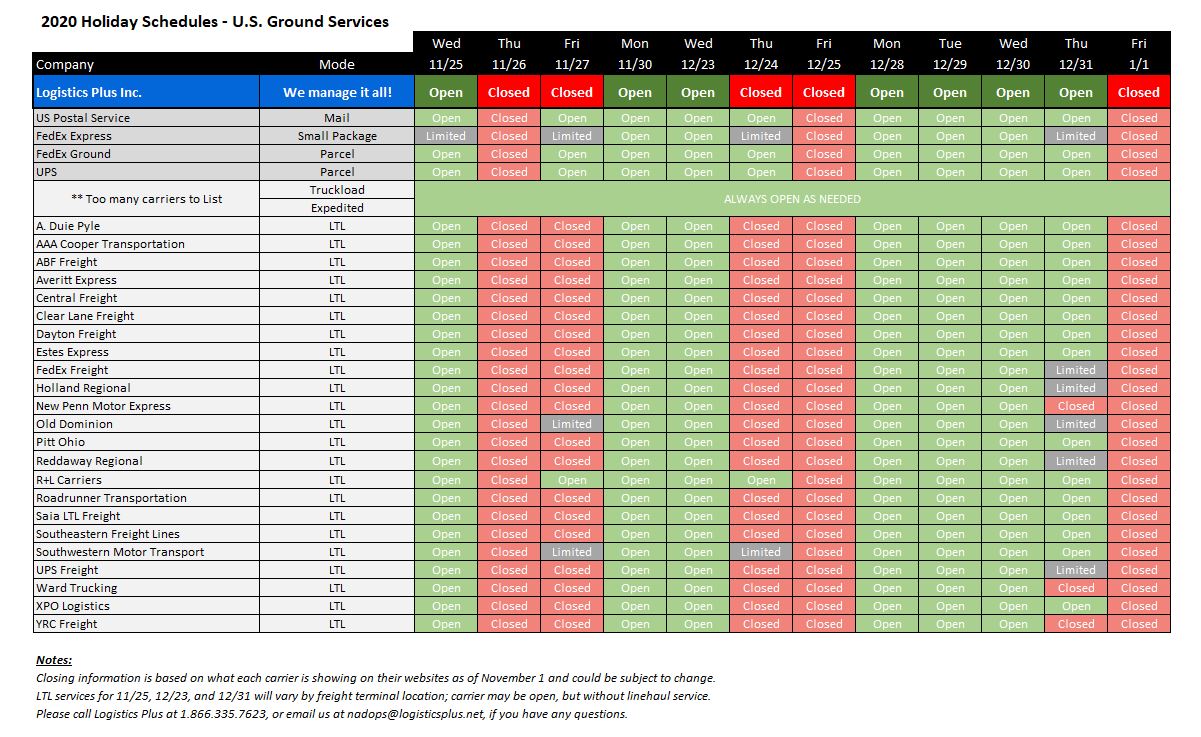
by logisticsplus | Oct 27, 2020 | News
U.S. Holiday schedules for Logistics Plus and ground carriers
As the holidays approach, we want to help you avoid any unnecessary shipping delays over the next few months. Shown below is the holiday schedule for U.S.-based Logistics Plus offices and warehouse locations, as well as the top U.S. ground (parcel and LTL) carriers.
If you have any transportation needs or expedited shipping requests, please contact Logistics Plus in advance of the office closings noted below. You can also reach out to our North American Division (NAD) by calling 1.866.335.7623 or emailing us at nadops@logisticsplus.com.

Click the image to see a larger version.
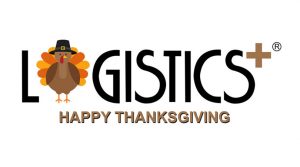
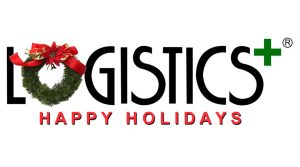
Do you have any last-minute expedited shipping needs? Let us know how we can help!


by logisticsplus | Oct 27, 2020 | News
FOR IMMEDIATE RELEASE
Logistics Plus Creates New Group Focused on Air Charter Solutions
The new, dedicated LP Air Charter Group is being headed up by two industry veterans.
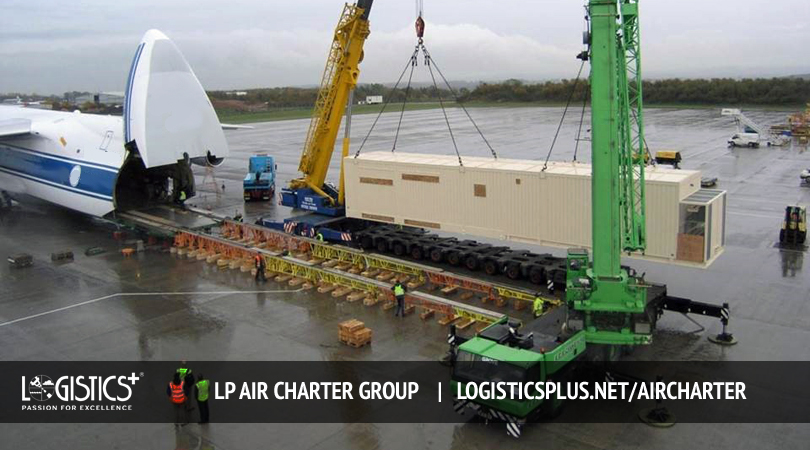 ERIE, PA (October 27, 2020) – Logistics Plus Inc. (LP), a leading worldwide provider of transportation, logistics, and supply chain solutions, has created a new, dedicated “LP Air Charter Group” within the company to focus on expanding its air cargo capacity and developing new air charter business opportunities around the world. The new group, based in Houston, TX, is being headed up by industry veterans Russell Means and Axel Kaldschmidt.
ERIE, PA (October 27, 2020) – Logistics Plus Inc. (LP), a leading worldwide provider of transportation, logistics, and supply chain solutions, has created a new, dedicated “LP Air Charter Group” within the company to focus on expanding its air cargo capacity and developing new air charter business opportunities around the world. The new group, based in Houston, TX, is being headed up by industry veterans Russell Means and Axel Kaldschmidt.
“We’ve always been very proficient at sourcing and managing air charters,” said Yuriy Ostapyak, COO & Director of Global Operations for Logistics Plus. “Due to pandemic-related air capacity challenges, the need for PPE supplies for our LP Medical division in the U.S. and abroad, and our overall growth trajectory, we felt the timing was right to give this service its own, dedicated resources to manage the operations and drive additional growth. Adding Russell and Axel to our award-winning team was a perfect fit.”

Mr. Means brings over 25 years of Fortune 100 supply chain global logistics experience, and technical air charter, heavy-lift, and air freight expertise, from his time working for companies such as Geodis, Volga-Dnepr Unique Air Cargo, GE Oil & Gas, and Halliburton.
 Mr. Kaldschmidt has over 25 years of commercial and operations experience developing supply chain and logistics relationships with C-suite contacts at Fortune 100+ companies. His experience includes time at Volga-Dnepr Unique Air Cargo, Hellman Beverage Logistics, Expeditors, and Pentagon Freight Services. Mr. Kaldschmidt holds multiple supply chain management and IATA/FIATA certifications.
Mr. Kaldschmidt has over 25 years of commercial and operations experience developing supply chain and logistics relationships with C-suite contacts at Fortune 100+ companies. His experience includes time at Volga-Dnepr Unique Air Cargo, Hellman Beverage Logistics, Expeditors, and Pentagon Freight Services. Mr. Kaldschmidt holds multiple supply chain management and IATA/FIATA certifications.
Airfreight capacity remains tight, as large passenger airlines, which normally carry 50% of all cargo, remain grounded making air charters increasingly important to critical supply chains. Already this year, the LP Air Charter Group has coordinated numerous critical air charter shipments around the world, including multiple PPE air charters from China to the U.S.; PPE air charters from China to South America; and, most recently, critical hazmat air charter cargo from the U.S. to North Africa.
Visit www.logisticsplus.com/aircharter to learn more about the LP Air Charter Group and solutions.
About Logistics Plus Inc.
Logistics Plus Inc. provides freight transportation, warehousing, fulfillment, global logistics, business intelligence technology, and supply chain management solutions through a worldwide network of talented and caring professionals. The company was founded over 24 years ago in Erie, PA by local entrepreneur, Jim Berlin. Today, Logistics Plus is a highly regarded, fast-growing, and, award-winning transportation and logistics company. With a strong passion for excellence, its 450 global employees put the “plus” in logistics by doing the big things properly, plus the countless little things, that together ensure complete customer satisfaction and success.
The Logistics Plus® network includes offices, warehouses, and agents located in Erie, PA; Akron, OH; Buffalo, NY; Chicago, IL; Chino, CA; Cleveland, OH; Dallas, TX; Des Moines, IA; Detroit, MI; Fort Worth, TX; Haslet TX; Houston, TX; Laredo, TX; Lexington, NC; Los Angeles, CA; Melbourne, FL; Nashville, TN; New York, NY; Olean, NY; San Francisco, CA; Australia; Bahrain; Belgium; Canada; China; Colombia; Czech Republic; Egypt; France; Germany; India; Indonesia; Japan; Kazakhstan; Kenya; Libya; Mexico; Netherlands; Poland; Saudi Arabia; Taiwan; Turkey; UAE; Ukraine; Uganda; and United Kingdom; with additional agents around the world. For more information, visit www.logisticsplus.com or follow @LogisticsPlus on Twitter.
Media Contact:
Scott G. Frederick
Vice President, Marketing
Logistics Plus Inc.
(814) 240-6881
scott.frederick@logisticsplus.com
Click the image below to download the Logistics Plus logo:


 The Logistics Plus Europe Project Cargo team is proud to announce that they have been nominated as the project logistics solution provider for the Siemens Mobility Desiro HC project to Israel. Over the past several months, our project engineering team worked hard to find the most efficient loading solution for Siemens railways. As a result, our team met the highest Health, Safety, Environment, and Quality (HSEQ) standards without interfering with the design of the railways.
The Logistics Plus Europe Project Cargo team is proud to announce that they have been nominated as the project logistics solution provider for the Siemens Mobility Desiro HC project to Israel. Over the past several months, our project engineering team worked hard to find the most efficient loading solution for Siemens railways. As a result, our team met the highest Health, Safety, Environment, and Quality (HSEQ) standards without interfering with the design of the railways.
![]()






 The Logistics Plus
The Logistics Plus 









